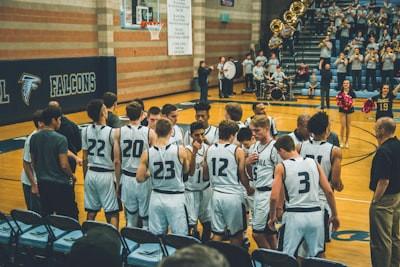Explore the World's Best Ideas
Join today and uncover 100+ curated journeys from 50+ topics. Unlock access to our mobile app with extensive features.
Developing teams with Tuckman’s model
Tuckman’s model explains the different stages that teams go through until they transform into high-performance teams.
The model helps you understand your teams and have a better knowledge of how to help and support them.
19
222 reads
Comparing Tuckman’s model to the periods of human development
- Childhood. Children need lots of accompaniment and support.
- Adolescence is a period of change and conflict in the physical area as well as attitude and behaviour. The need to find an identity is also highlighted.
- Young adulthood. Young adults work to become independent from their parents. They take responsibility for themselves and make their own decisions.
- Middle adulthood. People have gained experience and are better prepared to handle the stresses of life.
- Late adulthood. It’s a stage of acceptance of a more leisurely and relaxed life.
19
100 reads
Tuckmna's stages of team development
- Forming stage. It is similar to the childhood stage. Teams just formed and don't know each other, not have an understanding of the purpose of the team.
- Storming. This stage is similar to the adolescence stage. Teams will consolidate interpersonal relationships.
- Norming is similar to young adulthood. Understanding and cohesion form.
- Performing is similar to the stage of middle adulthood. This is when the team are high-performing.
- Adjourning, compared to late adulthood, is the stage when high-performance teams reached their missions and must disband.
20
60 reads
First Stage: Forming
The team is just formed, so the team members don't know each other and don't have a clear understanding of the purpose and vision of the team.
The Role of the Leader in the Forming Stage
The key is to guide the team, develop working agreements, and set the direction to follow.
Management 3.0 comes in during the forming stage
- Personal Maps: Increase trust and connections with the team.
- Work profile: Think about job titles not as a specific role but as the value they add.
- Identity symbols: Give a sense of belonging to the team by defining their name and image.
18
50 reads
Second Stage: Storming
Different members start losing shyness and begin to express their characteristics and points of view. Conflicts are healthy, but the team need to work on them.
The Role of the Leader
The leader will coach the team, encouraging the participation of the different workers but within the boundaries of a climate of dialogue and assertiveness.
Management 3.0
- Diversity Index: Understands the importance of diversity.
- Feedback Wrap: Creates a healthy culture through constructive feedback.
- Happiness Door: A tool for teams to express their opinions.
- Value Stories: Guides the team to find team values.
18
52 reads
Third Stage: Norming
Conflict gives way to understanding and cohesion.
The Role of the Leader
Good harmony allows the leader to take a step back and act as a facilitator.
Management 3.0 practices
- Celebration Grid: Talk about the different experiments and what the team learned about them.
- Moving Motivators: Understand individual and team intrinsic motivators.
- Team Competency Matrix: Find the competency gaps the team needs to reach their goals.
- Team Decision Matrix: Help the team consider how they will make their daily decisions.
- Steps to Happiness: Connects the work with the team's happiness.
18
49 reads
Fourth Stage: Performing
This a high-performance team, capable of carrying out their tasks with a great degree of autonomy and an excellent level of effectiveness
The Role of the Leader
Delegating tasks and responsibilities, and transferring trust and respect.
Management 3.0 practices
- Change Management Game: How the team will face the changes they are involved in.
- Delegation Poker: Agree with the team on how tasks and responsibilities will be delegated.
- Kudos: Congratulate and recognize everyone’s good job.
- Niko-Niko Calendar: Visualize how everyone is and their mood.
18
52 reads
Fifth Stage: Adjourning
High-performance teams must disband because they have fully fulfilled their mission.
The Role of the Leader
Celebrate the team’s achievements to reinforce the professionals’ sense of pride and satisfaction and instil motivation for future assignments.
Management 3.0 tools
Kudos: Take a moment to recognize and thank the different team members for their actions.
18
47 reads
IDEAS CURATED BY
CURATOR'S NOTE
A model for analysing your teams and detecting different behaviours and patterns.
“
Zayden 's ideas are part of this journey:
Learn more about leadershipandmanagement with this collection
How to showcase your skills and experience
How to answer common interview questions
How to make a good first impression
Related collections
Similar ideas
5 ideas
Storm To Perform: The 4 Stages Of Team Productivity
blog.trello.com
6 ideas
Double Diamond Model: what is it?
justinmind.com
Read & Learn
20x Faster
without
deepstash
with
deepstash
with
deepstash
Personalized microlearning
—
100+ Learning Journeys
—
Access to 200,000+ ideas
—
Access to the mobile app
—
Unlimited idea saving
—
—
Unlimited history
—
—
Unlimited listening to ideas
—
—
Downloading & offline access
—
—
Supercharge your mind with one idea per day
Enter your email and spend 1 minute every day to learn something new.
I agree to receive email updates






